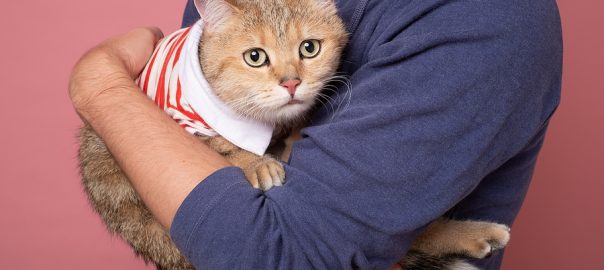What’s going on when your cat scratches her ears? It could be an infection, but it could also be ear mites. Here’s what you should know.
Q: My cat keeps scratching at her ears. Does she have an infection?
A: That’s possible. She could also have an infestation of ear mites.
Ear mites are most common in kittens and cats who have come from community situations such as feral colonies or, in some cases, rescue or shelter housing, but any cat can get them. The microscopic invaders feed on ear wax and other skin debris and reproduce rapidly.
Cats with ear mites experience intense itchiness. You may notice them frequently shaking their heads and scratching at their ears to relieve the itch. In severe cases, they end up with raw skin or hair loss around the ears, often complicated by a bacterial infection.
If your kitten or cat’s ears have a dry, crumbly, dark-brown waxy discharge that looks like coffee grounds, chances are good that he has ear mites. If you have sharp eyes and examine a sample of the discharge through a magnifying glass, you may see the tiny white mites, about the size of a pinhead, moving around inside the ear wax.
Ear mites don’t affect humans, but they are highly contagious between cats and can spread to dogs, as well. That means that even if only one cat is diagnosed with the itchy critters, you’ll need to treat not only her, but also any other pets in the household.
The good news is that it’s much easier these days to treat ear mites. Your veterinarian or her technician will thoroughly clean out the ears and apply a topical medication. Back in the bad old days, a cat’s ears had to be treated regularly for as long as a month. Now, medicated ear drops in combination with a whole-body or systemic parasite treatment will get rid of mites much more quickly and easily.
There’s more – including how vaccinating our pets for rabies can protect wildlife – in Pet Connection, the weekly nationally syndicated pet feature I co-write with Kim Campbell Thornton and my daughter, trainer Mikkel Becker.




